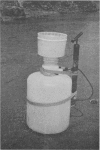Abstract
The study of cercarial populations in the field can provide a useful means of locating schistosome transmission foci and of evaluating the success of bilharziasis control programmes. It also provides a means of learning about certain aspects of transmission that have hitherto been neglected.
In recent years six techniques have been successfully field-tested or employed in field research on the biology of the cercarial stage of schistosomes. They include several variations of paper filtration of the water, the use of phototaxy for separating cercariae from water, and bioassay by exposing mice to infective water. The various advantages and disadvantages of each method are discussed in this paper. The author suggests that an approach to the ideal cercariometric method may be achieved by combining a paper filtration technique with mouse exposure.
Full text
PDF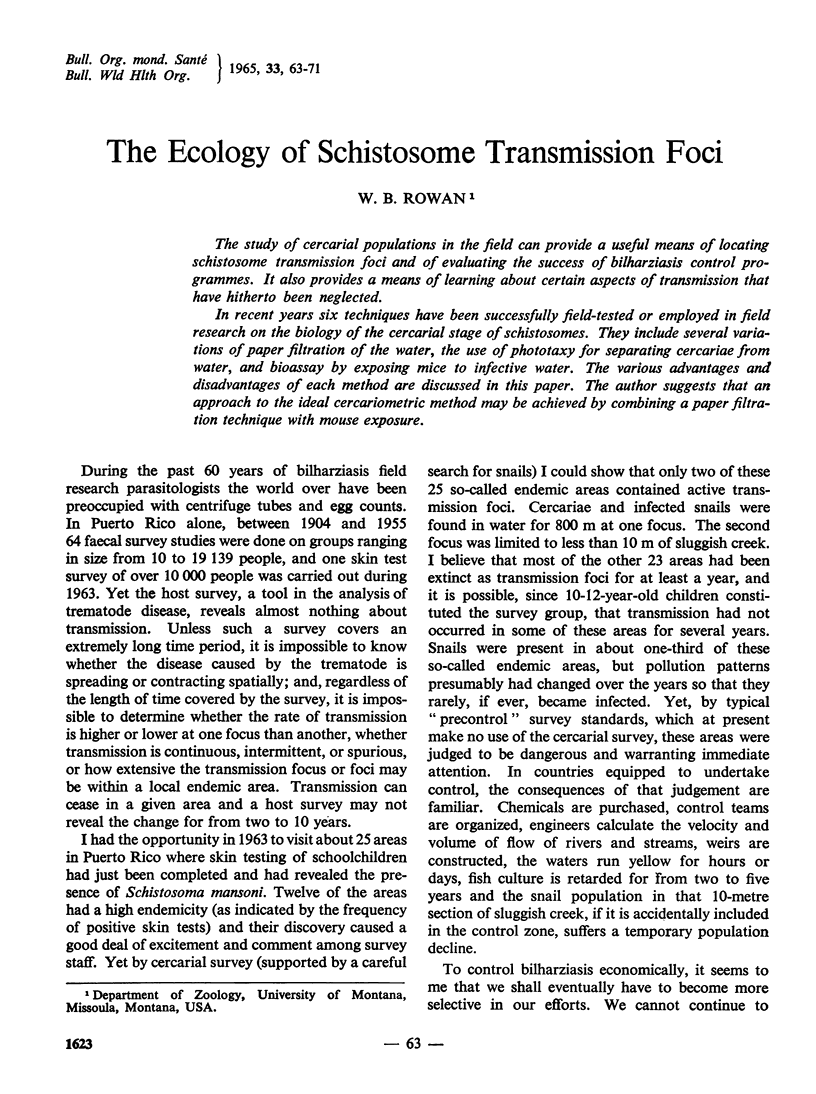
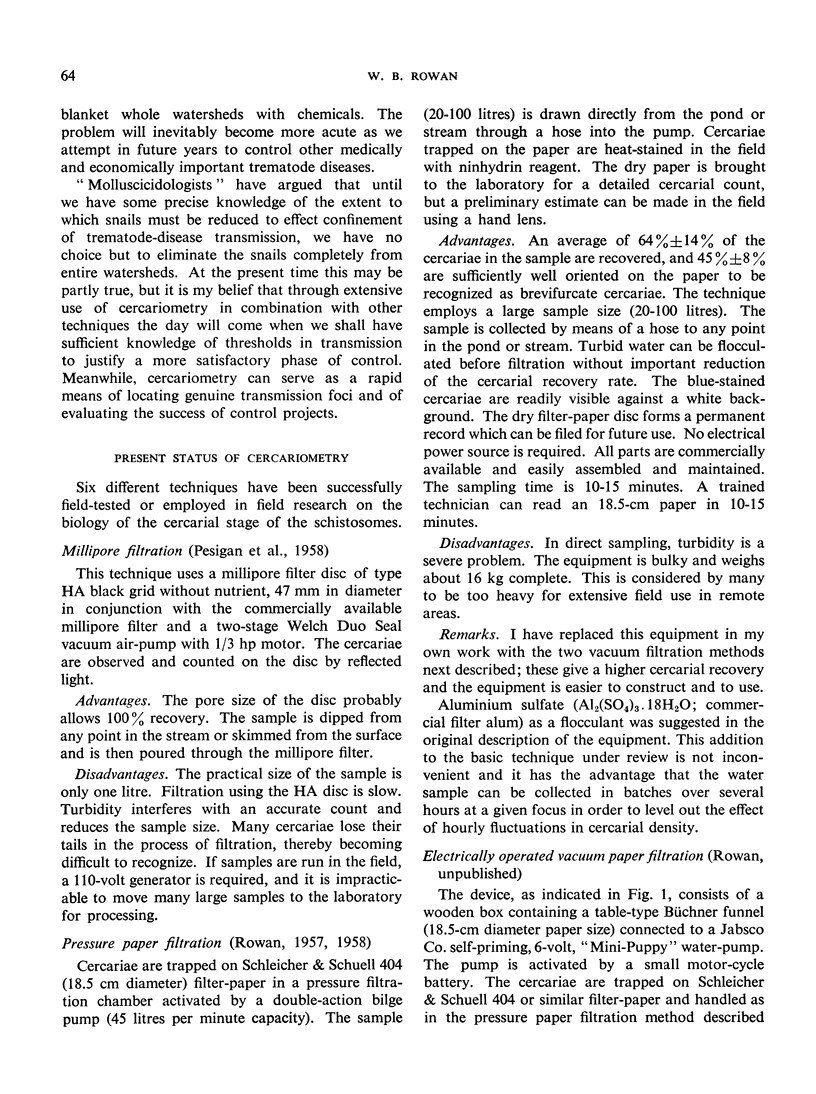

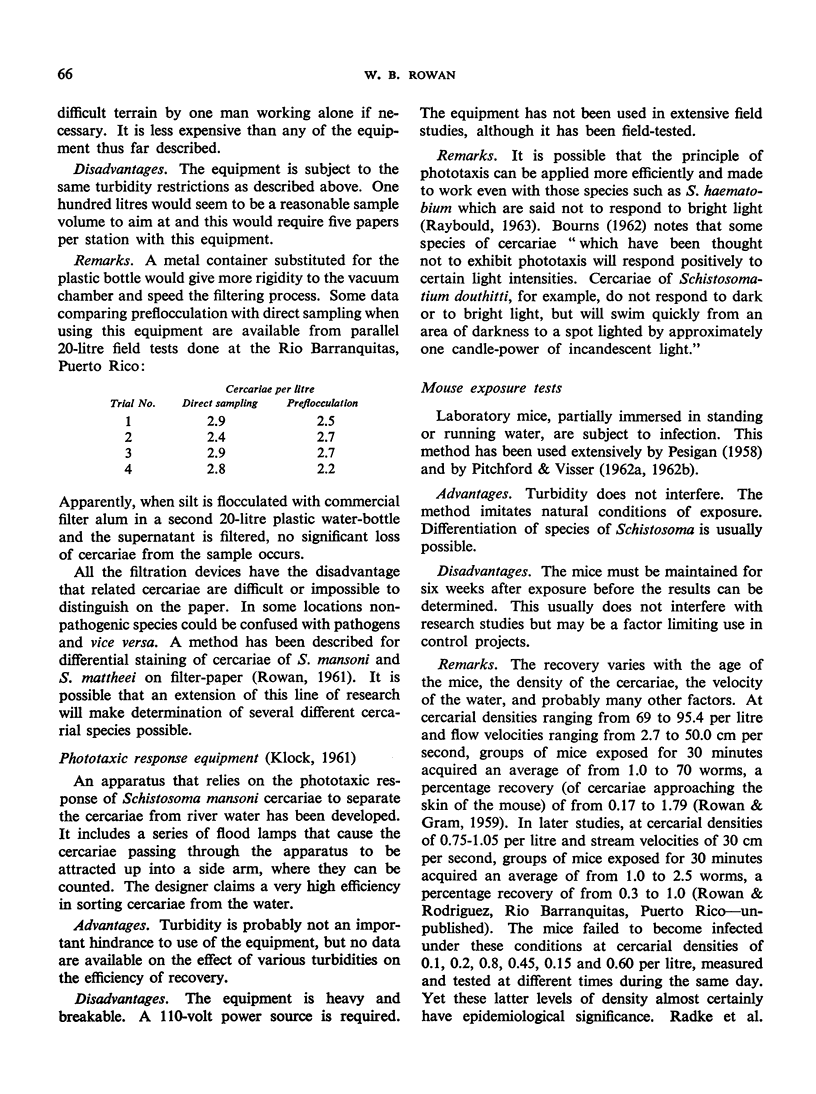

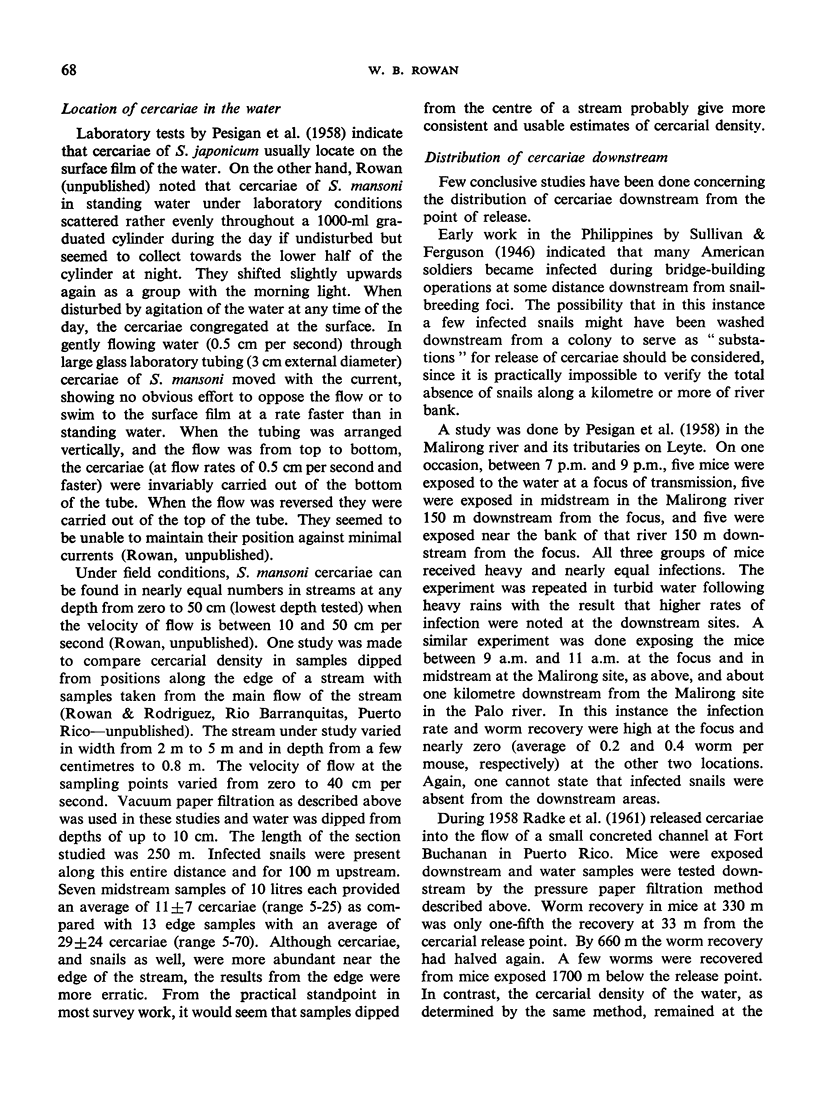
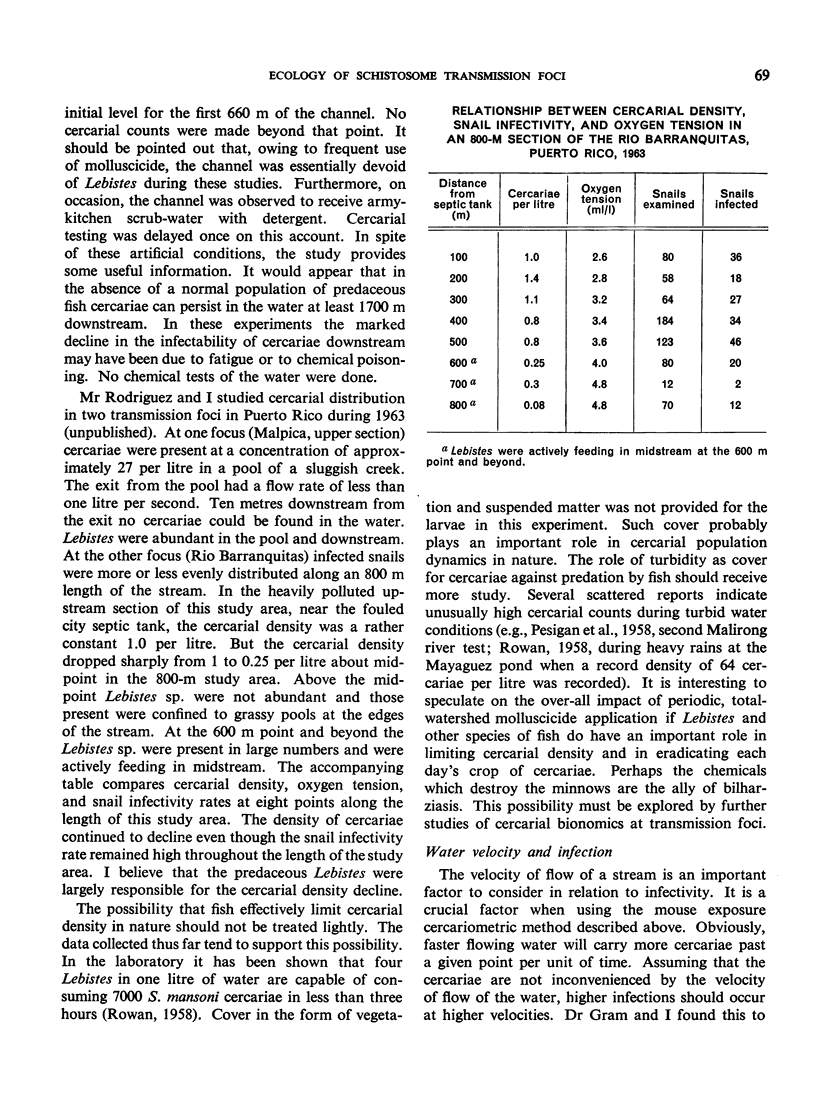
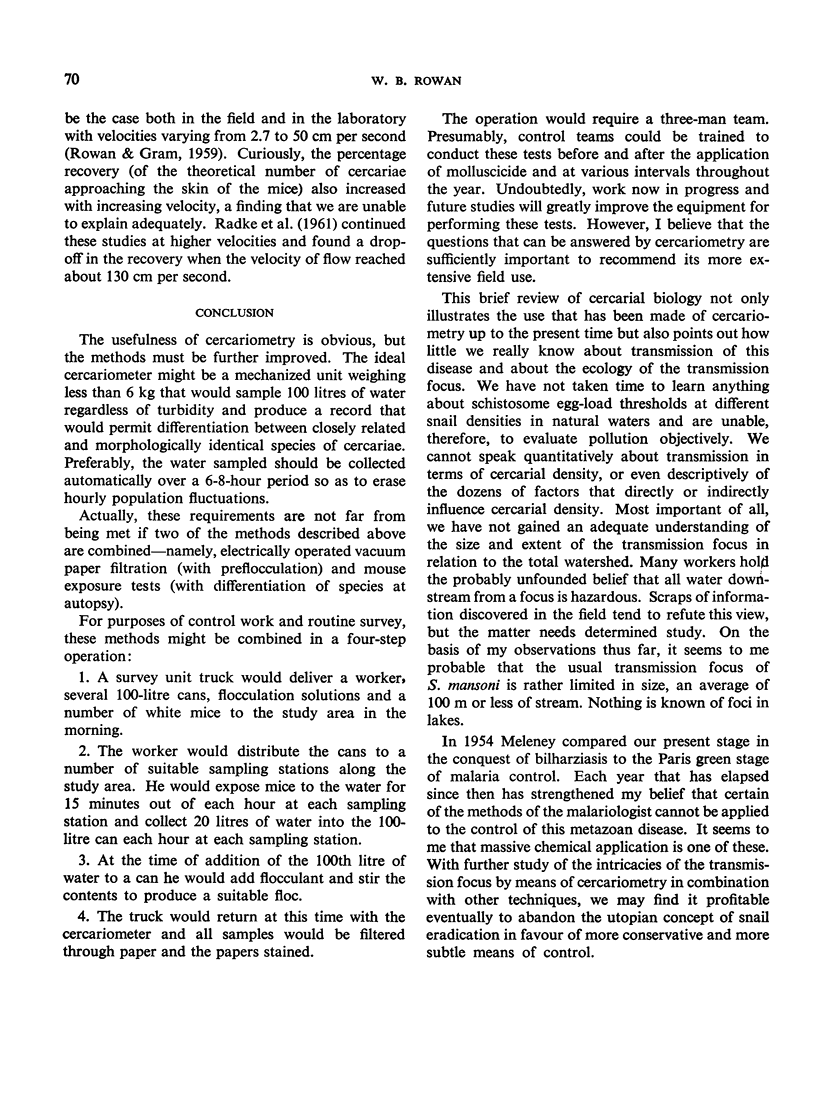
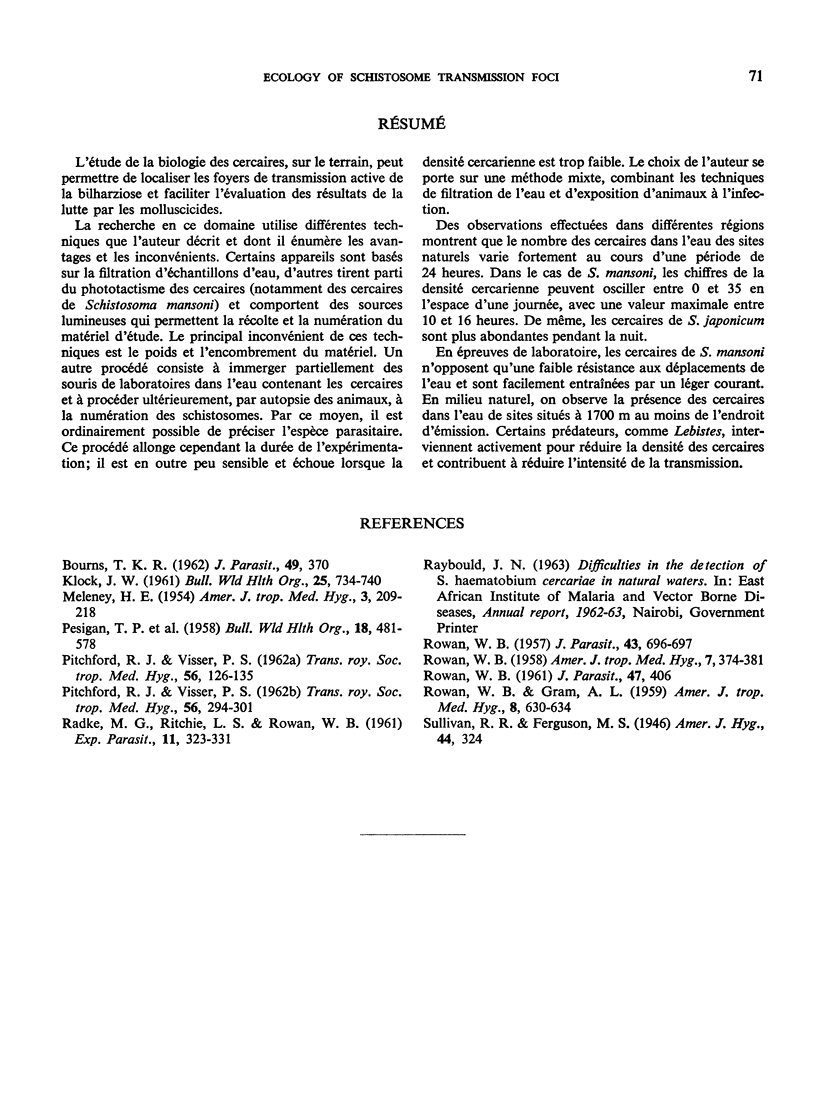
Images in this article
Selected References
These references are in PubMed. This may not be the complete list of references from this article.
- KLOCK J. W. A method for the direct quantitative recovery of Schistosoma mansoni cercariae from natural waters of Puerto Rico. Bull World Health Organ. 1961;25:738–740. [PMC free article] [PubMed] [Google Scholar]
- MELENEY H. E. Problems in the control of schistosomiasis. Am J Trop Med Hyg. 1954 Mar;3(2):209–218. doi: 10.4269/ajtmh.1954.3.209. [DOI] [PubMed] [Google Scholar]
- PESIGAN T. P., HAIRSTON N. G., JAUREGUI J. J., GARCIA E. G., SANTOS A. T., SANTOS B. C., BESA A. A. Studies on Schistosoma japonicum infection in the Philippines. 2. The molluscan host. Bull World Health Organ. 1958;18(4):481–578. [PMC free article] [PubMed] [Google Scholar]
- PITCHFORD R. J., VISSER P. S. Results of exposing mice to schistosomiasis by immersion in natural water. Trans R Soc Trop Med Hyg. 1962 Jul;56:294–301. doi: 10.1016/0035-9203(62)90051-2. [DOI] [PubMed] [Google Scholar]
- PITCHFORD R. J., VISSER P. S. The role of naturally infected wild rodents in the epidemiology of schistosomiasis in the eastern Transvaal. Trans R Soc Trop Med Hyg. 1962 Mar;56:126–135. doi: 10.1016/0035-9203(62)90139-6. [DOI] [PubMed] [Google Scholar]
- RADKE M. G., RITCHIE L. S., ROWAN W. B. Effects of water velocities on worm burdens of animals exposed to Schistosoma mansoni cercariae released under laboratory and field conditions. Exp Parasitol. 1961 Nov;11:323–331. doi: 10.1016/0014-4894(61)90039-x. [DOI] [PubMed] [Google Scholar]
- ROWAN W. B. Daily periodicity of Schistosoma mansoni cercariae in Puerto Rican waters. Am J Trop Med Hyg. 1958 Jul;7(4):374–381. doi: 10.4269/ajtmh.1958.7.374. [DOI] [PubMed] [Google Scholar]
- ROWAN W. B., GRAM A. L. Relation of water velocity to Schistosoma mansoni infection in mice. Am J Trop Med Hyg. 1959 Nov;8:630–634. doi: 10.4269/ajtmh.1959.8.630. [DOI] [PubMed] [Google Scholar]




